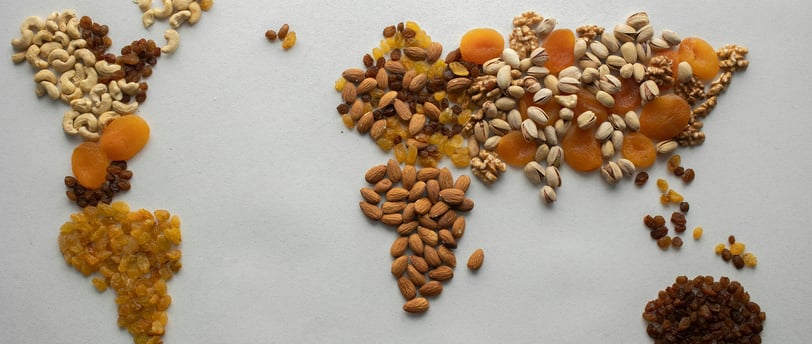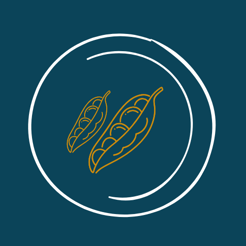On Traceability...
Why Traceability Still Isn’t the Norm (And Why It Matters More Than Ever)
4 min temps de lecture


The Illusion of Knowing
We live in a time where we can track our online orders in real time. A parcel’s location down to the hour. Yet somehow, we can’t say with certainty where the vanilla in our kitchen came from, or who grew the ginger in that loose-leaf chai. Despite a growing appetite for traceability in food systems, the agricultural supply chain remains surprisingly resistant to transparency. This isn’t just due to gaps in technology. Often, it’s by design. Layers upon layers of logistics make it difficult — sometimes impossible — to follow a product back to its roots. Farmers are bundled into lots. Middlemen blur the trail. And somewhere between the farm and the export crate, the identity of that product is erased. What’s left is a commodity with no context. We’ve accepted a kind of traceable-enough logic in food exports. Labels, certifications, keywords. But how close is that to the truth.
The Trouble With “Systems That Work”
In global trade, if a system is fast and profitable, it’s considered functional. Rarely does anyone stop to ask: Functional for whom?
For large buyers, fast sourcing at scale is a win. For smallholder farmers, it often means invisibility. Their role becomes transactional: grow, sell, disappear.
Even when intentions are good — with policies around ethical sourcing and fair pay — the reality is messier. Especially in Africa, where infrastructure is uneven, and many farmers operate outside formal registration. The systems designed to "protect" producers don’t always reach them. Sometimes, they even exclude them
A Gentle Reckoning With Fair Trade
There’s a quiet discomfort in export circles when talking about Fair Trade. It’s not easy to critique something that, on the surface, does so much good. And to be clear, it has opened up better opportunities for many.
But it’s also important to be honest. Not everything marketed as Fair Trade is genuinely fair.
The cost of certification — both in time and money — can be prohibitive for small-scale farmers. The bureaucratic hoops often require farmers to be part of formal cooperatives, keep detailed records, and pay fees they can’t always afford.
Many don’t get accepted. Others give up trying.
The result? The "Fair Trade" sticker ends up on the produce of those who can afford to enter the system, while thousands of smaller, more vulnerable farmers remain unseen — priced out of ethical legitimacy.
Meanwhile, consumers pay a premium, believing they’re doing the right thing. It’s a painful irony.
This isn’t a takedown of Fair Trade. It’s an invitation to look deeper. To ask: Is this enough? Is this truly equitable? Or just palatable
So What Does Real Traceability Look Like?
It doesn’t always look high-tech. Often, it starts with something humbler: being in relationship.
Real traceability means knowing not just where a product came from, but who it came from, and under what circumstances. That takes time. It takes conversations. It takes pausing for the slow work of connection.
At the community level, it might mean farmers recording their own harvest logs, keeping track of batches, noting soil conditions or rainfall cycles. It might mean sharing that data through community centers or cooperatives — not because a label demands it, but because it’s empowering. At a logistical level, it means fewer transfers of hands, better documentation, and systems built not around profit-first urgency but deliberate care. It may be slower, yes. But sometimes, slower is more honest
The Hidden Power of the Farmer’s Name
A product becomes more than a commodity when it carries a name.Not a brand name. A human name. A name grounds a product in a story. It introduces accountability. It reshapes the relationship between buyer and source. It shifts the dynamic from extraction to partnership. There’s a quiet dignity in that. And in an industry where so much is reduced to numbers, dignity is a form of resistance. We’ve seen it firsthand — how simple transparency can rebuild trust in forgotten supply chains. How knowing "this pepper came from Amina’s farm in Bukoba" changes how someone values that spice. How it reshapes pricing conversations, respect, and future contracts.
From Traceability to Transformation
The reason traceability matters isn’t because it’s trendy. It’s because it lays the groundwork for something deeper: transformation. Not just in trade. In communities. When sourcing is transparent, it opens doors to deeper collaboration: joint planning, profit sharing, community reinvestment. And beyond trade, it plants seeds for education, health, and intergenerational change. Take our side initiative in Madagascar — a quiet effort we call Somewhat Mada. It started with questions during sourcing visits: Where are the children during harvest? What keeps girls from school? The answers weren’t complicated — often, it was a lack of basics. Books. Pads. Support.
So we started small. Supplies. Smiles. Support. It’s not about charity. It’s about continuity. If trade can’t help educate the children of those who grow the world’s spices, then what is it even building?
Looking Forward
There’s no perfect supply chain. But there can be more honest ones.And honesty starts with transparency. With saying: We don’t know everything yet, but we’re asking better questions. We’re listening more closely. We’re making space for farmers to be seen, named, and heard — not as inputs, but as partners. Because the future of food should be rooted in fairness. And fairness begins with knowing where things come from. Not just the field. The face. The family. The future.
CONTACT US
The Waterfront Karen, Lang'ata Road, Nairobi.
contact@rickmalmerchants.com
+254795977490
Let’s be friends :
Mo - Fri: 9am - 6pm
© 2025 Rickmal Merchant Ltd.
All rights reserved
